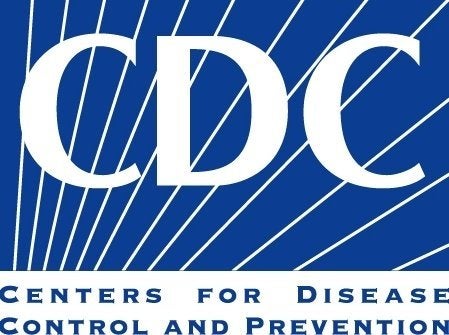
co-written by Melissa Shive
There is a city where 1 out of 20 people are infected with HIV, the virus that causes AIDS, but it is not located in the developing world. It is Washington, DC, where the infection rate is higher than that of Ethiopia, Rwanda, and Nigeria. In fact, every 10 minutes an American is newly infected with HIV and 34 percent of them are young people under the age of 30.
A report released last week by the Centers for Disease Control and Prevention (CDC) revealed that 56,000 people become infected with HIV annually in the United States -- a number that is 40 percent higher than previously estimated. For the past 15 years, the CDC has told us that the number of newly infected people with HIV was stable at an estimated 40,000 people annually, down from a peak of 130,000 in the mid-1980s. This apparent plateau of annual HIV infections has contributed to a complacency about HIV/AIDS in America with the mistaken assumption by many that medical advances had stopped the disease's growth.
In recent years, America has shifted its attention overseas epitomized by the closing of the White House Office of National AIDS Policy. The establishment and expansion of the lifesaving President's Emergency Plan for AIDS Relief (PEPFAR) and other important global initiatives have brought vital resources to the developing world and required that recipient countries establish national plans to address their epidemics. The CDC's new statistics, however, provide dramatic evidence that HIV remains a major public health problem in America that requires a national strategy to address it. There are more than 1 million people who are HIV positive in the United States and 25 percent are unaware of their status. From its discovery in 1981 until the end of 2005, AIDS has infected more than 1.5 million people in the U.S. and 500,000 people have died.
The CDC report also reveals that ethnic minorities and men who have sex with men (MSM) are disproportionately affected. The majority of new HIV cases in 2006 -- 53 percent -- were in MSM. These numbers are an ominous flashback to the situation when the epidemic first emerged, but now many of these men are Black or Hispanic. Forty-five percent of all new HIV infections occurred among Blacks in the United States, although they comprise 12 percent of the population. In fact, the number of Blacks living with HIV in the United States exceeds the number of HIV infected people in 7 of the 15 focus countries of the PEPFAR initiative. Furthermore, women account for an increasing proportion of the epidemic, growing from 8 percent of cases in 1985 to 28 percent in the United States and 50 percent of those affected worldwide.
The CDC's revised estimates are the result of many technical factors, including the use of a new test that distinguishes between recent and chronic infection, better statistical methods and calculations, Federal regulations that push states to collect data on new HIV infections, and increases in HIV testing and reporting. However, last week's upward revision in infection rates highlights the need to further strengthen the HIV/AIDS surveillance system in the United States and raises questions about whether these discrepancies could have been uncovered sooner.
The CDC statistics also underscore that HIV infection is on the rise among youth aged 13-24. This population faces unique risk factors and a widespread lack of awareness and education.
Young Americans have grown up viewing AIDS as a treatable chronic disease rather than a frightening terminal illness. Absent are memories of the fear and panic, the mass demonstrations for greater policymaker attention to the disease, and the death sentence that a diagnosis conferred. With studies revealing that American youth are engaging in sexual behaviors at young ages and with a rising percentage of HIV-infected youth, it is imperative that evidence-based HIV/AIDS education initiatives are supported to stem the tide of the epidemic.
Yet research and prevention funding has been inadequate in recent years to address the domestic epidemic and has often been hindered by ideology and politics, as in the case of the implementation of ineffective abstinence-only programs. A recent Kaiser Foundation study found that only 4 percent of the $23 billion spent on American HIV/AIDS programs supports prevention. When adjusted for inflation, there has been a decrease in the CDC HIV/AIDS prevention budget by 19 percent since 2002. Similarly, flat funding of the National Institutes of Health (NIH), adjusted for inflation, has resulted in an 18 percent decline in the agency's ability to fund scientific studies to find a cure and more effective prevention and treatment methods.
AIDS is a disease that cannot be fought with medicines alone; our country desperately needs the same kind of leadership and commitment here in the U.S. as our country has shown with its assistance programs to the developing world. The next president of the United States should establish a domestic evidence-based PEPFAR that would create a national strategy to eradicate HIV/AIDS at home. Progressive policies are urgently needed that recognize HIV/AIDS as an emergency in America as well as overseas. That means creating a national plan and providing necessary funding to increase research, implement evidence-based prevention programs that target vulnerable groups, address issues of stigma, discrimination and poverty, as well as improve access to life-saving treatments and health care to eradicate this disease.
The dedicated work of many people in the public and private sectors has led to a decline in death rates and many critical advances in fighting AIDS in the United States over the past 25 years. But last week's report of a 40 percent higher infection rate in America than previously estimated and 14,000 deaths annually should serve as a wake-up call from the AIDS amnesia surrounding the domestic epidemic in recent years. Let's remember the public health lessons from the beginning of the epidemic and ensure an emphasis on the power of prevention as well as the importance of effective treatment and care. With a national action plan to address this major public health issue that mobilizes all sectors of our society combined with continuing global investment and leadership, perhaps one day we will reach the time when people have to turn to the history books to learn that there ever was a disease called AIDS.
*Rear Admiral Susan J. Blumenthal, MD, MPA (ret.) is Senior Policy and Medical Advisor at amfAR, The Foundation for AIDS Research and a Clinical Professor at Georgetown and Tufts Schools of Medicine. For more than twenty years, Dr. Blumenthal served in health leadership positions in the Federal government, including as Assistant Surgeon General of the United States and the first Deputy Assistant Secretary of Women's Health in the U.S. Department of Health and Human Services, as Chief of the Behavioral Medicine and Basic Prevention Research Branch at the National Institutes of Health, and as a White House Advisor on health issues. Dr. Blumenthal has received numerous awards including honorary doctorates and has been decorated with the highest medals of the U.S. Public Health Service for her significant contributions to improving health in the United States and globally. Her work has included a focus on HIV/AIDS since the beginning of the epidemic in the early 1980s.
Melissa Shive, a Fulbright Scholar and Honors graduate of the University of Pennsylvania, served as a Research and Policy Assistant at amfAR, The Foundation for AIDS Research in Washington D.C. She is a first year medical student at the University of California-San Francisco.
This article was published in the Washington Times on August 12, 2008.
